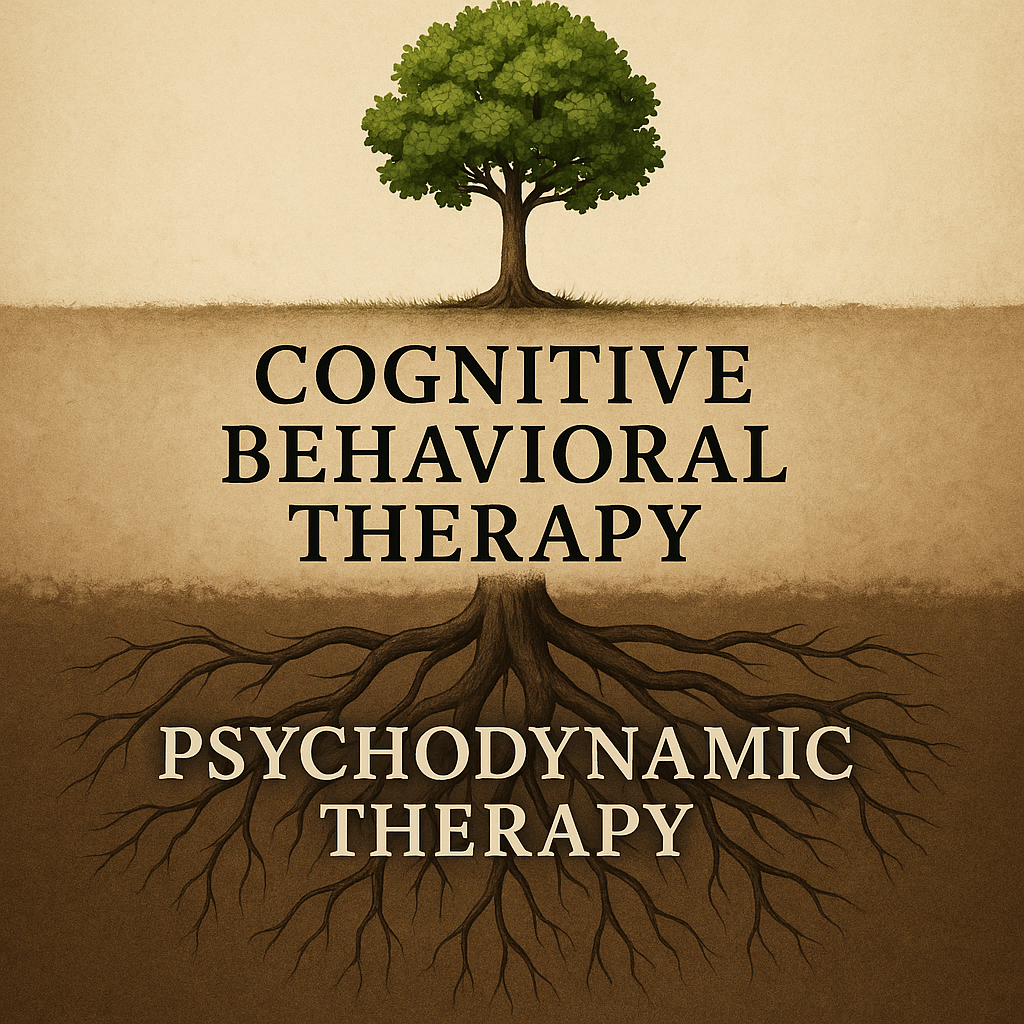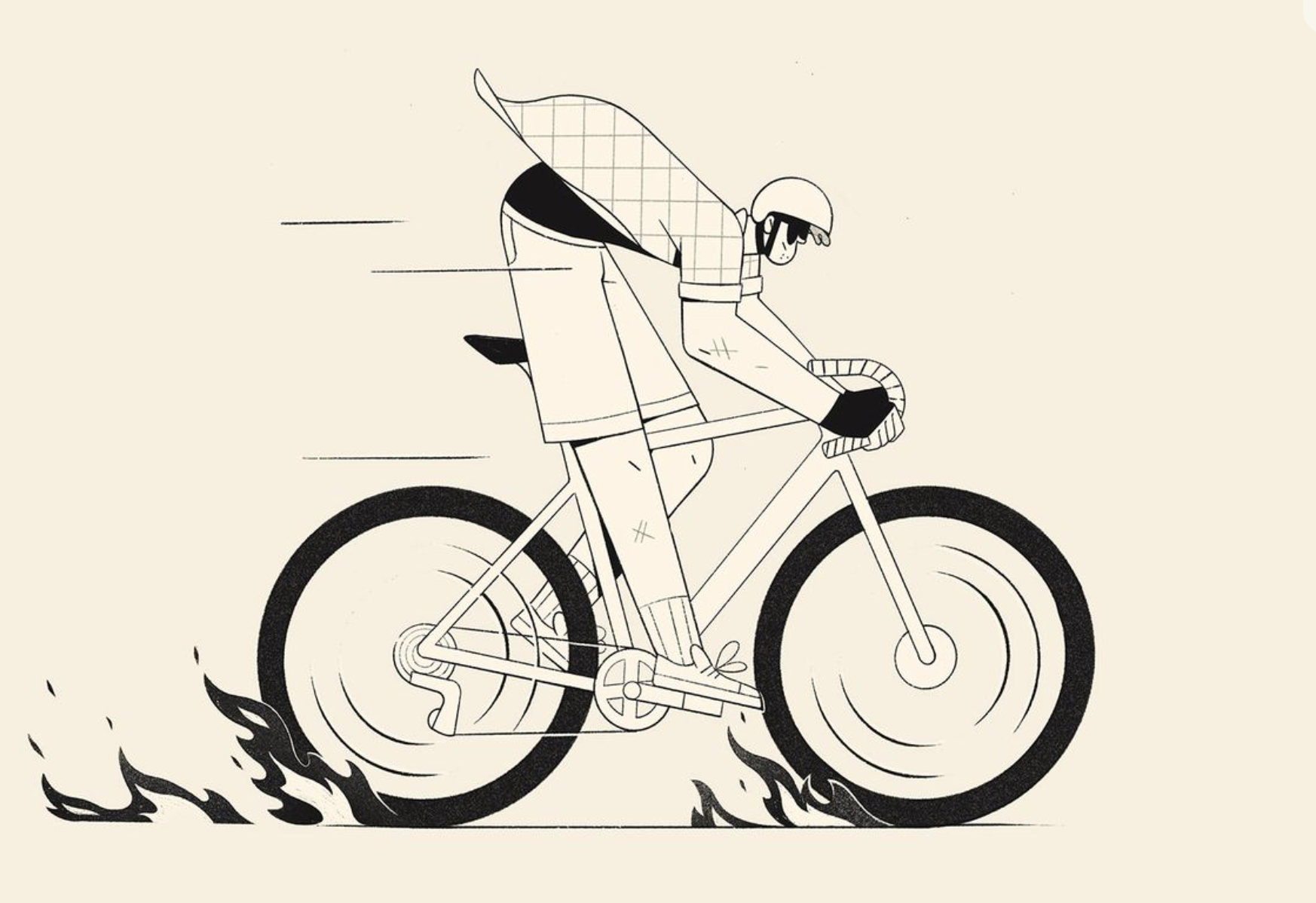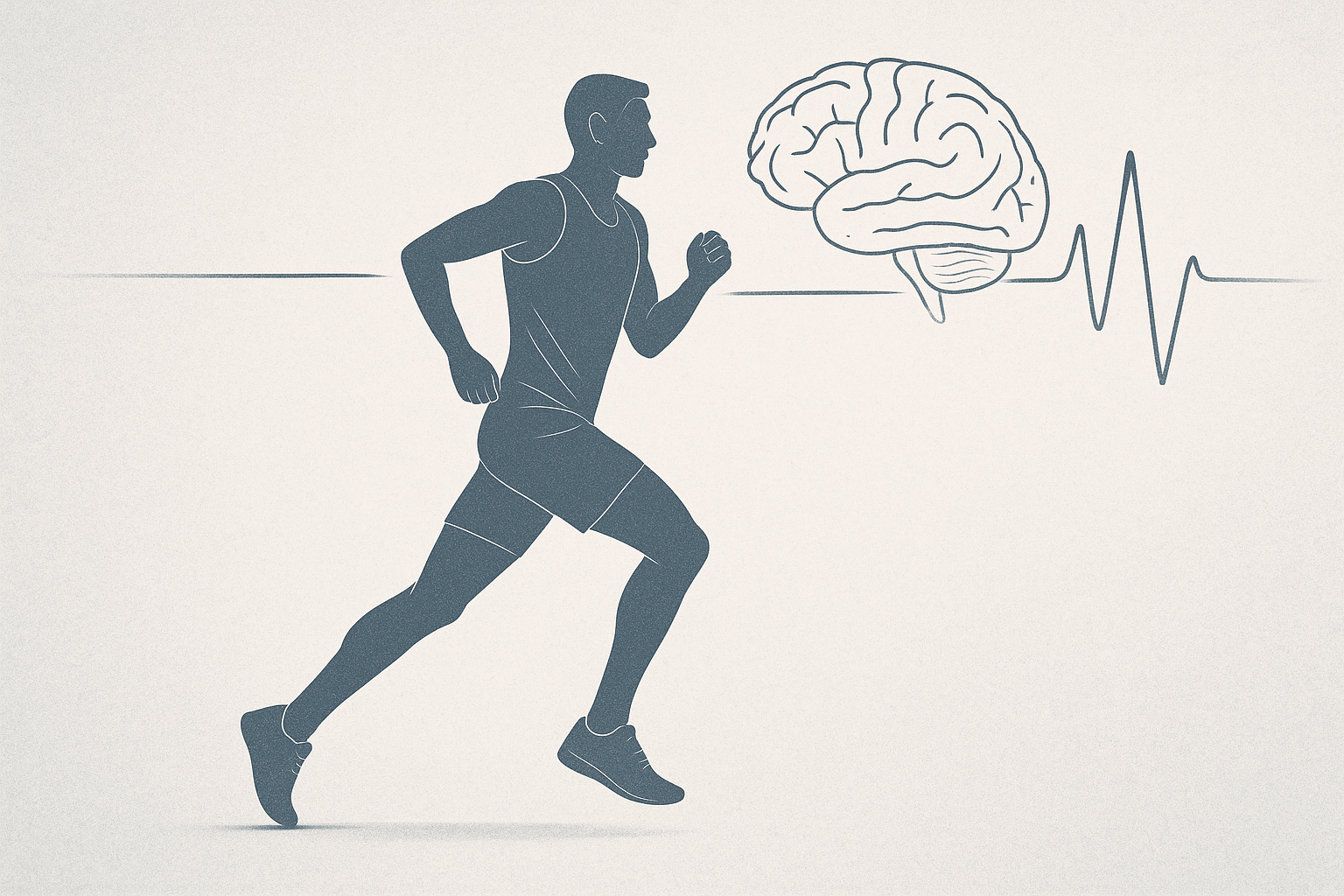Cognitive Behavioral Therapy (CBT) has become the modern gold standard of talk therapy—brief, structured, and aimed at managing symptoms. It teaches you to identify and challenge negative thoughts, to “reframe” distorted beliefs, and to change how you behave in response. It’s practical, efficient, and can bring real relief.
But here’s the deeper truth: CBT, on its own, is incomplete.
At its core, CBT is a partially finished psychodynamic therapy. It catches the smoke, but not the fire. It helps you treat the symptom but not the source. In our view, it’s like repeatedly treating a scab without ever asking why the wound keeps reopening in the first place.
When “Fixing Thoughts” Misses the Point
CBT focuses on managing what you think. Psychodynamic therapy asks why you think that way.
Our thoughts aren’t random—they’re emotional echoes from our past. They form out of the experiences, relationships, and traumas that shaped our inner world. If those early emotional experiences never had space to unfold—if anger, sadness, or fear were met with shame or silence—they don’t vanish. They harden into the automatic negative thoughts (“ANTs”) and core beliefsCore beliefs are deeply held views about oneself, others, and the world. In CBT, negative core belie... that CBT tries to change.
So when therapy focuses only on thoughts, it’s rearranging the furniture in a burning house. You might feel temporary relief, but the deeper patterns remain smoldering underneath.
The Paradox of the CBT Seeker
Interestingly, many of the people who reach out to us asking for CBT are the very ones who most need psychodynamic therapy. They are often bright, capable, and highly intellectual—people who’ve learned to survive by staying in their heads. They want to think their way out of suffering.
But this “cognitive armor” is itself a defense. It’s the mind’s way of avoiding the emotions that once felt too painful to feel. The same strategy that helped them survive—a sharp intellect, a drive to analyze, a need for control—is now what keeps them stuck.
Trying to solve an emotional wound through logic is like trying to talk a broken bone into healing. The pain isn’t a problem to be reasoned with; it’s a messenger pointing toward what’s unfinished.
The Real Work: Following the Breadcrumbs
In psychodynamic therapy, we absolutely pay attention to thoughts—but not to battle them. We use them as breadcrumbsleading back to the origin of pain. Damaging self-talk isn’t something to replace—it’s something to understand.
When you follow those thoughts down to their roots, you find the parts of yourself that were once unseen, unheard, or unloved. As those places are met with empathyEmpathy is the ability to understand and share the feelings of another person. In psychodynamic ther... instead of avoidanceAvoidance refers to the efforts made by individuals with PTSD to evade reminders of the traumatic ev..., the thoughts begin to shift on their own. You don’t have to force them to change—they naturally reorganize around a more healed emotional core.
The Second War: Fighting Thoughts with Thoughts
Many people leave CBT feeling like they’re now waging two battles—the original pain, and the new struggle to “think differently.” Trying to overpower your own mind can feel like mental whack-a-mole: exhausting, self-defeating, and subtly shaming.
In our experience, thoughts change when you heal. Not the other way around.
Psychodynamic therapy moves beneath the surface, toward the origin story of your thinking—where emotions were split off, where love and fear got tangled, where identity took shape. Healing there changes everything above it.
MindfulnessMindfulness in CBT involves focusing on the present moment without judgment. It helps individuals be...: The Missing Ingredient
If CBT teaches you to challenge thoughts, mindfulness teaches you to relate differently to them. It’s the shift from wrestling to observing—from judgment to curiosity.
As Sam Harris notes, thoughts are “mirages”—appearances in consciousness that gain power only through identificationIdentification is a psychological process where individuals adopt the characteristics, values, or be.... With mindful awarenessMindful awareness involves being fully present in the moment without judgment. In CBT, it helps indi..., you can notice them and think:
“Interesting. When I saw that friend, I suddenly felt inferior. Oh—that’s the same feeling I used to have with my dad.”
Now the thought isn’t an arrow; it’s a clue. Mindfulness lets you hold the thought lightly enough to see the emotional truth underneath it.
The Integration: Thinking Less, Feeling More
Psychodynamic work isn’t against CBT—it integrates its best parts. But instead of trying to “fix” thinking from the top down, we work from the inside out.
We help you see that your thoughts are not enemies to conquer, but old emotional patterns trying to protect you. When those wounds are brought into the light and processed, the inner noise quiets. Thought patterns soften. Compassion replaces control.
At Keil Psych Group, this is what we mean by doing CBT through a psychodynamic lens. We meet you where you are—often overthinking, anxious, analytical—and guide you toward what your mind has been protecting you from feeling.
Because real change doesn’t happen through mental effort—it happens through emotional freedom.
In Closing
The goal isn’t to think better.
It’s to feel fully, so your thoughts no longer have to protect you.
When the wound heals, the scab stops returning.





